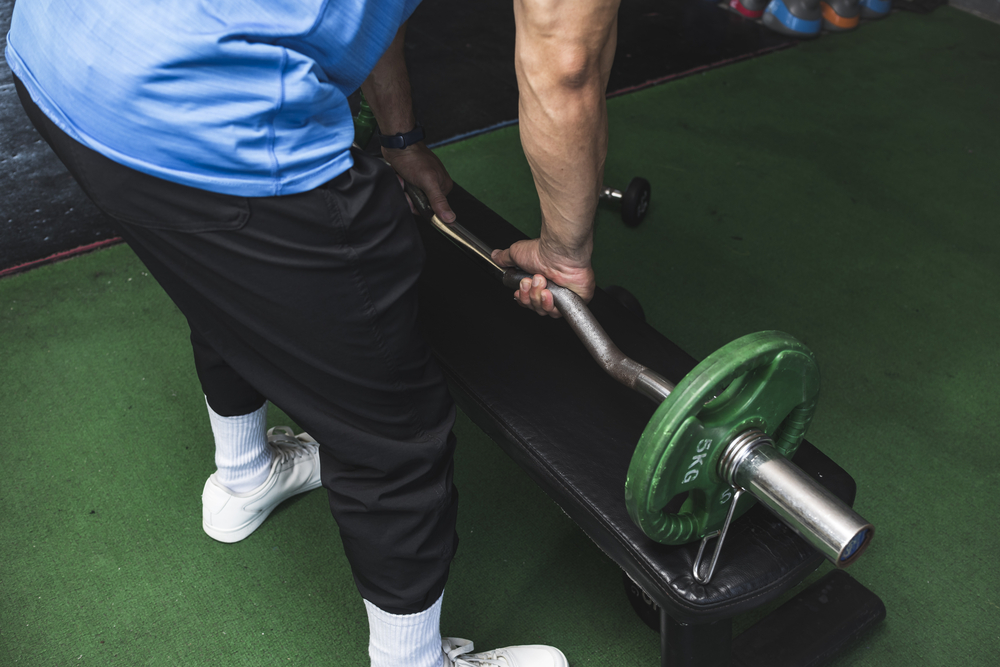Reverse curls have some amazing benefits for your arms that you can’t get with other types of curl.

What Muscles Do Reverse Barbell Curls Work?
Biceps
*cursory google* The primary muscles worked in the reverse curl are the brachioradialis, brachialis, and biceps brachii.
Forearms
*continues reading on from cursory google* The forearm extensors also get worked in a secondary manner. *yawn*
I know this information is standard for all these articles, but I don’t imagine there are many people out there searching for how to make their brachioradialis grow.
I’m just thinking out loud, you know?
Grip
The palms face down in the reverse curl. Because the weak point of the grip is where your fingers aren’t, you are also getting some light grip work in as well.
Gym common sense alert!
Don’t grip the implement with your thumbs wrapped over the top. You might drop something on your foot.
Which piece of exercise equipment is best for the reverse curl?
Because heavy loads aren’t the point here, it doesn’t matter. The reverse curl is versatile. You can use barbells, dumbbells or kettlebells.
No implement in particular has an advantage for this exercise. If you were looking for load, you would go to the barbell.
Are Reverse Barbell Curls Better Than Normal Curls For Building your biceps and forearms?
No. Because of the change in grip, you aren’t able to use very much weight. You will have to include other variations that permit for more load.
If reverse curls aren’t better, why should you include them in your arm training?
Time to put the broscience hat on again. This is something I’ve tested on myself and countless clients over the years.
Reverse curls are great for relieving elbow pain. If you’re benching and pressing heavy, it’s common for the tricep tendon right round the back of the elbow to get wound up.
When you perform reverse curls with a super slow, controlled eccentric, this tight area around the back of the tricep tends to ease off. For many people, this gives instant relief.
I like to think of the reverse curl as a health and longevity exercise, that keeps you in the game so you can do more of the heavy work that drives adaptation.
Enter the Zottman curl: a reverse curl hybrid variation to bypass some of the downside
Invented by American strongman George Zottman, the Zottman curl is a dumbbell exercise that allows you to push a little heavier than you would with reverse curls.
1. Start at the bottom with the dumbbells resting in a neutral position (palms facing towards your body).
2. Twist (supinate) and curl the weight up with the palms facing towards the ceiling – a normal dumbbell curl.
3. At the top of the curl, squeeze the bicep hard, twist the dumbbells inwards until the palms are facing the floor, then slowly return the dumbbells to the start position. I like a minimum 5 seconds eccentric lowering here.
Try it out! It’s a nice hybrid. The grip gets a little rest on the way up, which allows you to extend the set for a little longer.
Sources
I’ve been in the fitness and strength training industry for nearly a decade. In that time, I’ve gained 30 pounds of muscle, written hundreds of articles, and reviewed dozens of fitness supplements. As for my educational background, I’m a currently studying for my Active IQ Level 3 Diploma in Personal Training.

